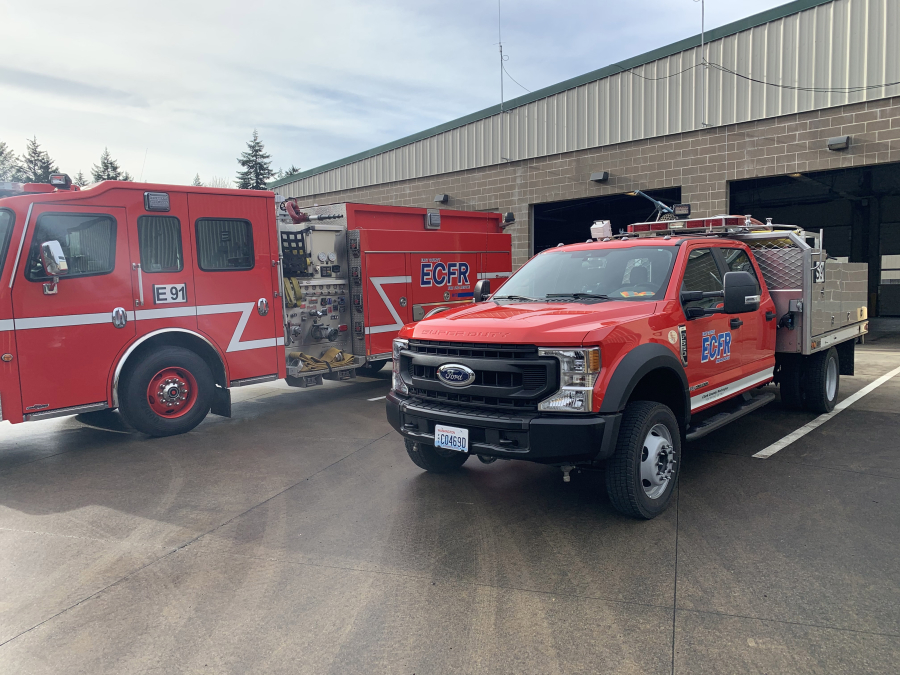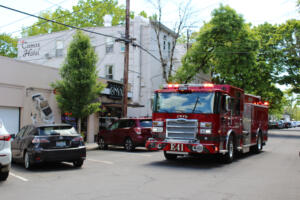The image of firefighters racing to a call in a big, red fire engine, lights blazing, is an image ingrained in the public’s psyche, but some fire districts — especially those in rural districts populated with steep, narrow roads — are deciding to leave the classic fire engine at the station on routine medical calls and, instead, opt to take smaller, more maneuverable vehicles.
The East County Fire and Rescue district, which serves rural areas north of Camas and Washougal, is no exception.
The fire district unveiled its new squad vehicle, a Ford F-550 with 4-x-4 capabilities, seating for four firefighters and equipment for medical and brush fire calls, at the beginning of 2021.
“We used to respond in an engine on most of our calls,” explained ECFR Fire Chief Mike Carnes. “Now we have changed from an engine to a squad.”
The smaller vehicle will make it easier for crews to respond to rural medical calls and should save taxpayers money, Carnes said.


